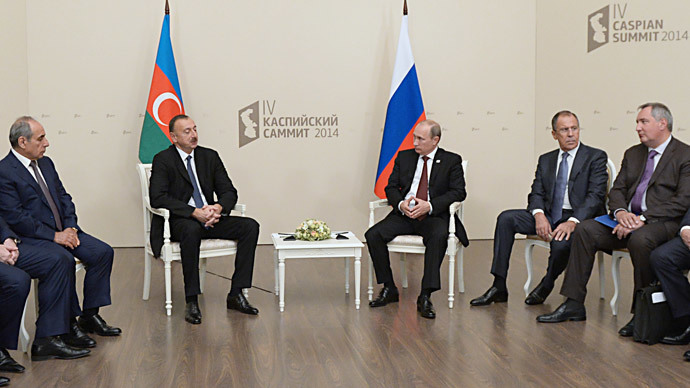Caspian Summit: Successful cooperation in 'oasis of peace'

One of the biggest achievements of the Caspian Summit was the considerable progress made in preparing the Convention on the Legal Status of the Caspian Sea.
This was made possible by an agreement on key principles of littoral states’ activity in the Caspian Sea, set out in the political declaration signed by the leaders. This declaration will form the future convention’s cornerstone. It is expected that the convention will soon be ready for signing to successfully conclude the work that has been going on for 18 years now.
More than that, an agreement has been reached on clear language for delineating marine areas, the seabed, subsoil resources, and rules and principles covering navigation and fishing. The provision that most of the Caspian Sea area remains for the littoral countries’ common use is very important. This makes it possible to rule out the sorts of misunderstandings and tensions in interstate relations that previously could arise over different interpretations of the rules governing Caspian waters.
The declaration sets out a fundamental principle for guaranteeing stability and security, namely, that only the littoral states have the right to have their armed forces present on the Caspian. In general, only the five Caspian nations that have sovereign rights over the Caspian Sea and its resources will resolve all matters pertaining to the region.
More importantly, it was decided to activate our joint efforts on the basis of the Agreement on Security Cooperation in the Caspian Sea, which came into force during the Summit. This is a framework agreement, and in order to implement it provisions in an efficient fashion, protocols on cooperation between the littoral countries’ border guards and tax services will be prepared.
The Summit also created an opportunity for the joint development of transport infrastructure, including the North-South corridor that will link countries in western and northwest Europe with southern Asia via Russia, the Caspian basin and Iran, as well as building a railway encircling the Caspian. Further, a number of multilateral projects, including those in disaster relief and rescue, have been worked out. The cooperation agreement in the area of hydrometeorology has also reached a successful conclusion. The agreement will enable littoral states to set up a regional system for exchanging information on the situation of the Caspian, needed for ensuring safe navigation and oil production.
Summing up, the Caspian Summit showed that an efficient model of mutually beneficial cooperation in the Caspian Sea, which was rightly called an oasis of peace by President Vladimir Putin, is being created in the once very contested region.
The Fourth Caspian Summit, a meeting of leaders of all the Caspian Sea littoral states, namely Russia, Azerbaijan, Iran, Kazakhstan and Turkmenistan, took place in Astrakhan on September 29.
The statements, views and opinions expressed in this column are solely those of the author and do not necessarily represent those of RT.
The statements, views and opinions expressed in this column are solely those of the author and do not necessarily represent those of RT.













